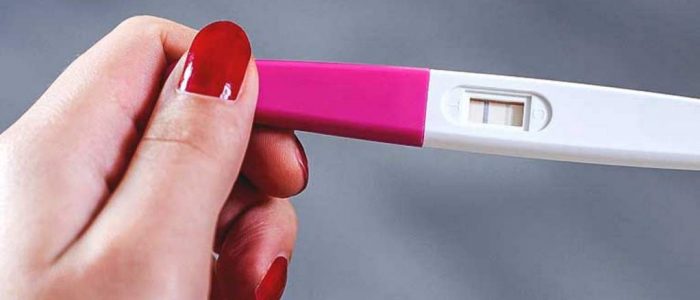Do you think you have become pregnant but can't find a way to certify it? Are you thinking of buying a pregnancy test to clear up your doubts but don't know how to use it? When and how to use a pregnancy test to get reliable results and what to do if the result is positive?
Pregnancy tests are so popular because they allow us to know very quickly if we are pregnant from the comfort of our home and with a high percentage of reliability.
These tests work by detecting the presence of a certain hormone in a woman's urine. This hormone is only present in women in a state of good hope, so if you have doubts that you are pregnant, you may be able to solve your doubts with one of these popular tests.
Although it is not a totally foolproof method, today it is the most popular tool that exists and that most women use to find out if they have really become pregnant without having to wait too long.
Below we review all the keys that you must know so that, step by step, you can learn to use a pregnancy test correctly.
How does a pregnancy test work?
All the pregnancy tests that we can do at home can be found without a prescription at any pharmacy.
The operation of a pregnancy test is very simple, since it is responsible for detecting the hormones of pregnancy present in the urine.
The chemical strip at the end of the test is capable of detecting human chorionic gonadotropin (hCG), which the human body begins to produce once the embryo has formed.
Some tests are also capable of detecting some variation of this hormone, known as hyperglycosylated hCG or H-hCG, which is released some time after fertilization and is usually detected before hCG, so it is useful to detect the pregnancy even much earlier.
What should I do if the pregnancy test is positive?
Good news? Is it confirmed that you are going to be a mother?
In that case, the most sensible thing to do is to try to find out the day of the pregnancy and make an appointment as soon as possible with your medical or gynecological professional to do a blood test to confirm or discard the result.
If the scenario occurs that you are finally pregnant, the most important thing is the moment to set your first prenatal care appointment, where a professional will advise you on pregnancy matters and will give you the guidelines so that you and your baby pass this stage of safe and healthy way.
Many mothers choose to include some prenatal vitamins with folic acid in their diet, while thinking of a way to bring this wonderful news to their friends and family.
How to take a pregnancy test?
The best time of day to take a pregnancy test is with the first urine of the day.
The operation of the pregnancy tests is really simple. You just have to place the device on a flat surface to see what color it takes after coming into contact with your urine, although it is best to always follow the manufacturer's instructions to the letter.
A very good trick to avoid waiting forever is to let the test take effect, while you try to do something else. In this way you will feel that time passes faster and the wait will not be so overwhelming.
Remember to check the expiration date, since if it has expired, this could affect the result.
Step 1: Buy a pregnancy test
There are different brands on the market that sell pregnancy tests today. The truth is that it doesn't matter much which one you choose, since the operation will surely be the same.
When to take a pregnancy test?
Most pregnancy tests can be done up to 5 or 6 days before the delay. However, it is important to know that most women will not test positive that soon.
Although the results are usually reliable, there is a possibility that the test is positive because the hormones are present, even if the pregnancy has not ended.
In any case, to get a reliable diagnosis - and at the same time save money - it's best to wait until the day after your period is supposed to come. For more rigor, wait a week.
Step 2: Take the test
Once you know the best time to take a pregnancy test and you have read the instruction manual, it will be time to prepare yourself.
It is best to do it in the bathroom, sitting on the toilet; but this could vary depending on the brand chosen. Just follow the instructions and try to do everything as explained in the test leaflet.
The pregnancy test has been negative but my period still does not come
If your test is negative but your period still does not drop, then you can try waiting a few days before repeating your pregnancy test. There can be several reasons, since your body is not yet producing enough hCG for the pregnancy test to detect it, as it is simply a delay in your ovulation.
What to do if the first test is positive and the second negative?
Many women who want to know if they are really pregnant sometimes tend to repeat the test to ensure that the result is reliable.
If you have any questions or you start to have any pregnancy symptom A few days later, it is best to visit your doctor so that a professional can make a more secure diagnosis.
What if the result is not entirely clear?
Although false positives are not usually frequent, the reality is that it is always better to wait a couple of days and repeat the test to contrast the results.
In any case, if your doubts persist after a few days and the period still does not come down, the best option is to go to your medical center so that they can help you discover what is happening to you and find a suitable treatment for you.



